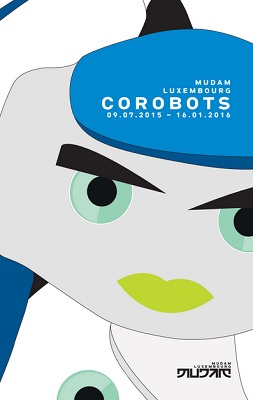
As part of the 'And Yet It Turns' exhibition at Luxembourg's Musée d'Art Moderne (MUDAM), the Interdisciplinary Centre for Security, Reliabiltity and Trust (SnT) at the University of Luxembourg today announced it is presenting an installation featuring humanoid robots and drones from 9 July 2015 until 16 January 2016.
The project is offered by a research team led by Dr. Patrice Caire of SnT, and will involve so called CoRobots interacting with each other and offering information to museum visitors as they greet them. The installation has been designed to educate visitors on the capabilities and possible uses of robots in the future - in this case exhibiting them as potential museum guides. The presentation will focus on both the scientific examination of robots in its varied aspects, as well as a more light-hearted introduction to the concept of 'human-robot interaction' for the future.
A visitor encounter with the two humanoid robots and drone will be available in a room specifically designated for the purpose, leading directly off MUDAM's entrance hall. The CoRobots will converse with visitors and host an interactive quiz to demonstrate their abilities.
Scientist and Artificial Intelligence expert at SnT Dr. Patrice Caire, who initiated the modern robotics project, cited two aspects to the idea, explaining: "On the one hand, it is about demonstrating the technical challenges of our exciting field of research. We are scientists after all. But on the other hand, we want to present a good show to the public."
Museum Director Enrico Lunghi was equally enthusiastic about the interest the exhibition has garnered, stating "This project beautifully shows what a strong influence science has on our life, and accordingly on art as well."
SnT was launched as a research institute in 2009 by the University of Luxembourg and employs a multi-disciplinary approach to address not just technical but also business, human and regulatory issues. Indeed, to make the concept a reality, Dr. Caire worked with an interdisciplinary team of roboticians, informaticians, engineers, museologists, screenplay writers, sound designers and technicians. Over the next six months, the scientific team their time into offering regular informative presentations in conjunction with the exhibition and have reportedly even relocated their workplace to MUDAM for its duration, to be available to visitors interested in finding out more on the field of robotics.
"Technically, the robotics industry is on the upswing,” commented Prof. Holger Voos, who heads the Automation Research Group at SnT, where the robotics research activities take place. "It has long been about more than just micrometre-precision welding or cutting of materials. In future, humanoid robots will assume a supporting role in many areas of life. The CoRobots project gives us the opportunity to familiarise citizens with these new possibilities."
In the event that an interested party is not able to attend the exhibition, a video documentary has been made available on the SnT website at www.uni.lu/snt/video and may also be found on Youtube.
Photo by MUDAM /SnT








